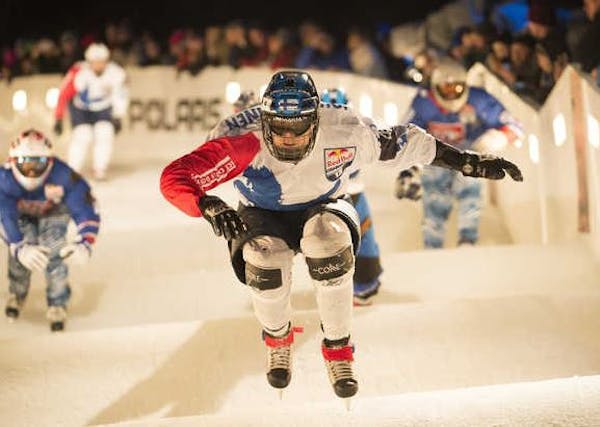Nicole Wallace has always had a fascination with and a deep affection for animals.
Some of her childhood memories, she said, revolve around her beloved Shetland pony named Cupcake and going on outdoor adventures.
"I think I came into the world with my love of nature, outdoors and animals," said Wallace, of Elk River.
An avid birder, Wallace recalled hiking frozen wetlands with her father, trail-riding with her mother, and sailing with her grandfather. She remembered endless summer days exploring for toads, frogs and turtles. At 13, she moved to a hobby farm, surrounded by critters: cats and dogs, fish and snakes, and even a chinchilla and a rat or two.
"We had various foster animals, too," said Wallace. "I think I counted 26 animals living with us at once. I loved it."
In college, Wallace wanted to study veterinary medicine before she veered to wildlife rehabilitation. She volunteered at an exam room with a friend and immediately was hooked. "I found my passion," she said.
She now has worked various jobs in wildlife rehabilitation, and is a veterinary technician with Minnesota Spay Neuter Assistance Program. She's also president of Wildlife Rehabilitation and Release Inc., a small nonprofit, and is certified with the Minnesota Department of Natural Resources as a master wildlife rehabilitator.
"The purpose — and real joy — is releasing an animal back to where they came from and allowing them a second chance in the wild," said Wallace, 36. "I take great satisfaction in doing that."
Wallace talked more about her training and how she handles difficult animals in a recent conversation. Below are edited excerpts:
On the need for wildlife rehabilitators
People often ask me why I don't let nature take its course. This always strikes me as odd, because these animals are not coming in for natural reasons. They're being hit by cars, attacked by our domestic cats and dogs, flying into windows, getting poisoned. The majority of the tens of thousands of wild animals that receive rehabilitative care in Minnesota are brought in by the public. There's a community of people that think wildlife does deserve quality medical care.
Can the public's good intentions cause problems?
Yes. You must have the proper training and permits, period. I would hate to think what would happen if there weren't trained professionals out there to help this community. Wild animals don't belong in the public's care without the proper training. It breaks my heart to receive an animal that the well-meaning public tried to care for. It typically doesn't end well for those wild animals. I've seen many orphans become sick, have metabolic issues, or die because of the wrong diet or husbandry.
Is it dangerous being a wildlife rehabilitator?
It can be. Zoonotic diseases are scarier than any wild animal. I'm vaccinated for rabies, but there are so many parasites, bacterium and fungus that can be scary, too. Proper hygiene is a must and educating yourself keeps you protected. Wild animals will bite you before they thank you. That's why personal-protection equipment is a must for wildlife rehabilitators.
On proper protection
I make sure I have leather gloves, disposable exam gloves, and goggles. Bath towels are important to keep a barrier between you and the animal. These animals don't know you're trying to help them. All they see is a giant predator — you. Taking care of yourself and making sure you know the risks are key. You can't care for animals if you're injured yourself.
On encounters
I have not had any serious bite wounds or serious injuries. I take care in knowing that what species I'm approaching and what their defenses are. Experience is the greatest teacher. Wildlife rehabilitators only handle animals as necessary because it's super stressful for them. If I cannot safely handle a wild animal while completing a physical exam, I have to sedate the animal.
On hard-to-handle animals
Beavers are really tricky animals to handle. Their teeth put any of my gloves to shame and can go through anything I have to protect myself. They're difficult because you can't get a good handle on them. They're quick. A 30-pound beaver is pretty strong, too.
On the need for more help
We don't have near enough licensed wildlife rehabilitators to meet demand. Our numbers are dwindling, and we need new blood.
Tori J. McCormick is a freelance writer from Prior Lake. Reach him at torimccormick33@gmail.com.

Taylor Pendrith rolls into second-round lead at 3M Open
Coughlin holds into CPKC Women's Open lead; Canadian star Henderson derailed by closing bogeys

